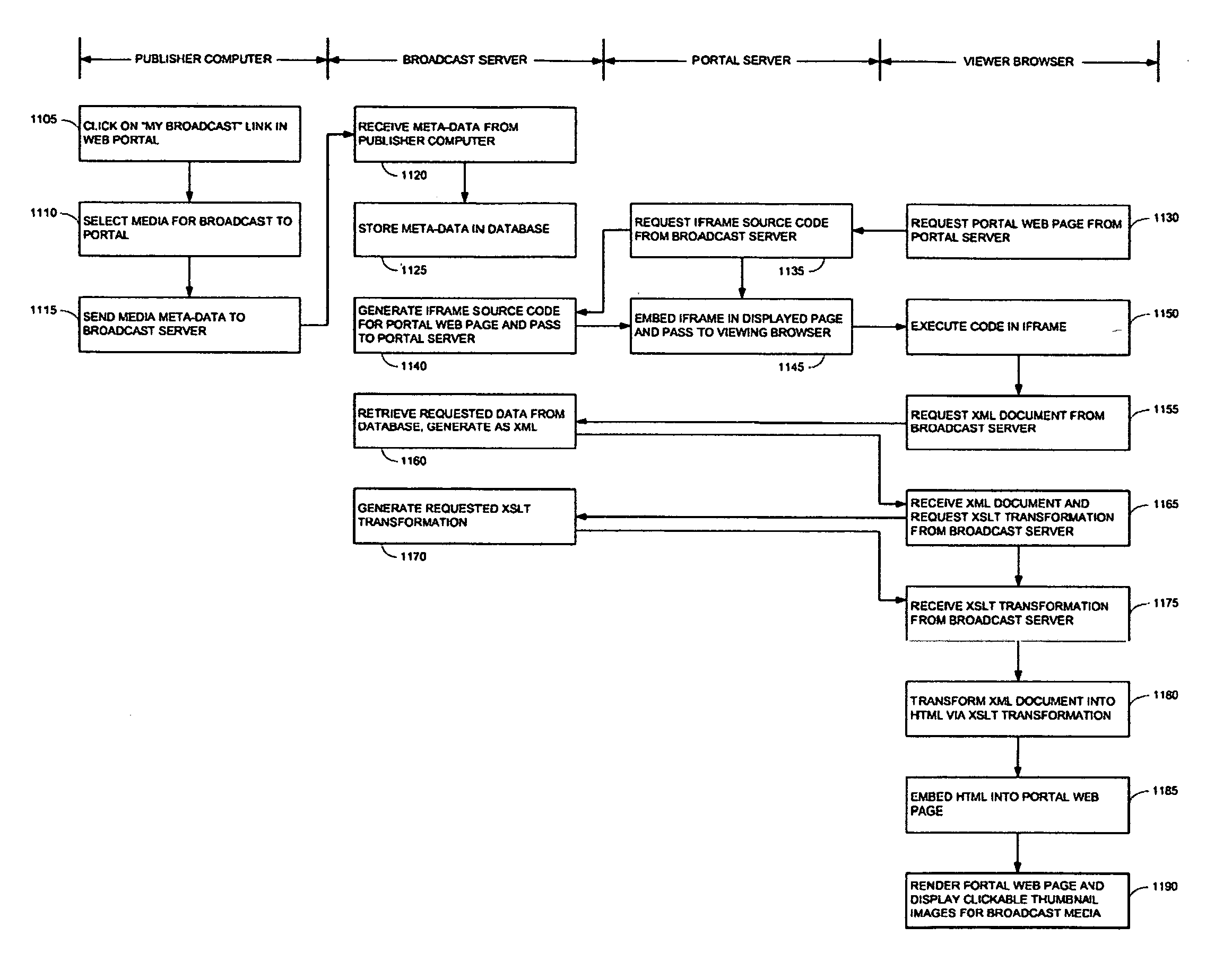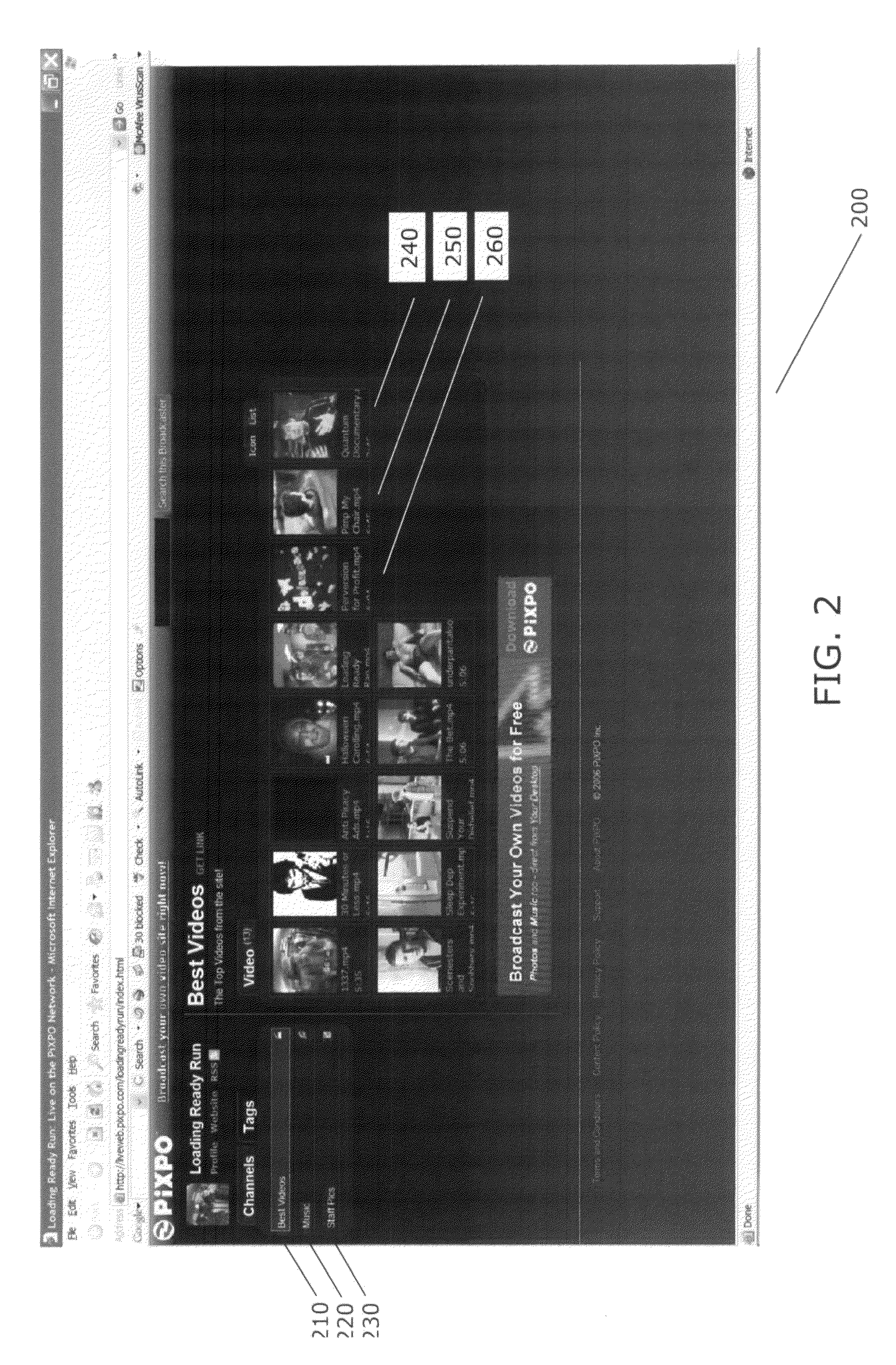Peer-to-web broadcasting
a technology of peer-to-web and multi-media, applied in the field of multi-media broadcasting over the internet, can solve the problems of content owner losing control over his media, content owner must maintain his content on his own computer system and also on the internet server, and time-consuming to upload large video files
- Summary
- Abstract
- Description
- Claims
- Application Information
AI Technical Summary
Benefits of technology
Problems solved by technology
Method used
Image
Examples
Embodiment Construction
[0034]The subject invention concerns peer-to-web broadcasting. Using the subject invention, a publisher can broadcast his media to the web from his peer computer, without uploading the media to a central server. As such the publisher retains complete control over his media assets, and who is able to view them.
[0035]Reference is now made to FIG. 1, which is a simplified block diagram of a peer-to-broadcast system, in accordance with an embodiment of the subject invention. Shown in FIG. 1 is a broadcasting system 100 that enables peer computers, referred to as publishers, to broadcast their media over the web. The publishers stores their media, and web clients can view the broadcast media using conventional web browsers, without requiring additional client software. The broadcast media can be live video, pre-recorded video, music, pictures, presentations, slideshows and other forms of media.
[0036]Media can be published on a mobile phone 112, a video camera 114, a wireless device 116, ...
PUM
 Login to View More
Login to View More Abstract
Description
Claims
Application Information
 Login to View More
Login to View More - R&D
- Intellectual Property
- Life Sciences
- Materials
- Tech Scout
- Unparalleled Data Quality
- Higher Quality Content
- 60% Fewer Hallucinations
Browse by: Latest US Patents, China's latest patents, Technical Efficacy Thesaurus, Application Domain, Technology Topic, Popular Technical Reports.
© 2025 PatSnap. All rights reserved.Legal|Privacy policy|Modern Slavery Act Transparency Statement|Sitemap|About US| Contact US: help@patsnap.com



